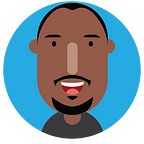Digital Storytelling Workshop with Q-MADI
Background
One key lesson I’ve learn about the process of creating products is to never underestimate its value to beginners. An all too easy thing to do as consumers is to critique what we consume. Yet that’s just one end of the spectrum. On the other end is the often less talked about area of creation. What does it mean to create something? Specifically, what does it take or feel like to create a tangible product? The process of taking an idea to life is one that drives the Digital Storytelling Workshop. It’s a workshop that I came up with years ago to indulge children in the creative process. With it, I help children understand that they can be creators of the content they regularly consume in form of cartoons and games. It also helps them see the connection between their skills/interests (innate or learned) and these everyday products.
What I’ve since learnt from these workshops from Lagos to Johannesburg is that there’s a lot of value in helping children see how much they can offer in birthing original products driven by their imagination, collaboration with their peers, skills among other useful values that go into the process.
Last month, a colleague Ahmad Adetola-Kazeem reached out to me to deliver the Digital Storytelling Workshop to a bunch of teens under his organization — QMADI. Though I’d only ever worked with children, I was excited about the prospect of working with these teens to demystify the process of creating digital content and triggering their interest in areas of opportunities around it. It also offered me a chance to share, learn and create.
The 6-hours session split across 3 Saturdays followed.
Session 1
It started with an introduction where we talked about games, cartoons etc. As tech savvy teens, they were high on the consumption end of the spectrum as could be observed from their smartphones, app usage etc. Next, I shared my works with them and delved into the process it takes to develop a typical app. Here, we talked about the planning phase, mind-mapping to find collaborators, identify tools, sketches. The beauty of this phase is that it has little to do with the sophisticated things that the teens had come to associate with creating apps. So, rather than talking about technical jargons, we talked about writing down ideas on paper, fleshing it out to identify required skills, people, considerations and lastly, walking through the process in simple terms. Ironically, the latter forms the rudiment of any algorithm, as I’d later explain to the teens. As a precursor to what we’d be doing next, I taught the kids about the essence of starting and finishing. There are too many products sitting on storage devices for different reasons — laziness, self-criticism, fear of feedback, lack of self-esteem, perfectionism etc. I wanted the teens to understand that the real magic of possibilities happens when a product is built and shared/distributed with the outside world. Then to reinforce what a first product looks like, I showed them the first Apple Computer, which had them laughing. The message was clear — your first product will not be perfect!
Session 2
With a fair knowledge of the process, we proceeded to create our own project. The emphasis for this was to start and finish. Again, it wasn’t about developing a fine product. Rather about putting forth an idea and making it come alive. The teens shared ideas — a combat video game, a short film, a car racing game. Grand ideas they were and also doable at various levels. In the end, we leaned towards the short film given our time constraint. Plus, I wanted the teens to see the relative complexity of even the smallest of ideas when it comes to creating it. Together, we fleshed out the short film idea. A simple interactive movie titled “Ade: from dullard to genius.” They named it, identified the characters, features, developed the script into scenes, drew the storyboard on paper and fleshed out the voiceover. In all, the teens worked together which was a critical element in this phase.
Session 3
We took the manually drawn storyboard and voiceover recordings to the PC. Together, we walked through the basics of Photoshop design: resizing, rotating, coloring and saving out the files. The teens were eager to see even the simplest of animation so we went delved a little into Adobe Flash Professional. I rigged a character and animated it to their delight. Next, we cut the sounds for each scene using Adobe Audition software. Lastly, we used Adobe After Effects to combine the sounds and drawings for each scene into a final rendered video. We all watched it to their satisfaction. I made sure to emphasize the importance of self-pride in their works.
Conclusion
It’s easy to compare what these teens have done with the more polished works out there. But as I would always say, there’s a world of difference between consuming and creating. Hardly any creator looks back to his first product without a sense of humour given the level of improvement over time. It’s why I insist in starting, finishing and putting the work out. The benefit of hindsight is critical in the process.
In the end, they’d also experienced firsthand the process of creating a piece of work from their original idea. I have no doubt that it’s a great start for them in their interesting journeys. Among others, it offers creative confidence, gives them a tangible product for their individual portfolios, serves as talking points for their reflections over time, shows them diverse career paths to follow and demonstrates enormous possibilities if they build on their skills.
